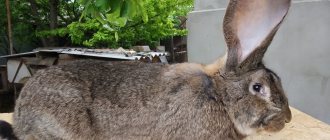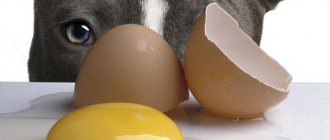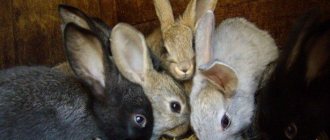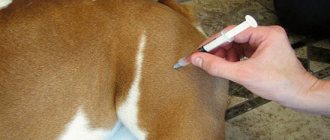The main rules for communicating with a snail
There are several rules that must be strictly observed when communicating with Achatina.
- The first rule: communication with Achatina must be started with clean, wet hands. Hands must be washed with soap and rinsed thoroughly so that no soap marks remain on your hands. Also, there should be no traces of cream, aromatic oils, etc. on your hands.
- The second rule: do not touch or pull the sink with your hands. Achatina sticks to the walls of the home very tightly. If you try to tear it off by taking it by the shell, the snail may remain on the wall, and its shell in your hands. This is practically death for the animal. Therefore, before picking up your pet, you need to spray it with a little water, and use a wet finger to touch its face and the front of its leg. Achatina will crawl onto a wet hand and unstick the rest of the leg from the wall of the aquarium. Also, you should not touch the growth, as it can easily be damaged. Then the further formation of the shell will occur with disturbances, it will become covered with scars.
- Third rule: you cannot forcibly pull Achatina out of the shell, as you can damage not only its house, but also Achatina’s body.
- Fourth rule: children should not be allowed to play with snails without supervision.
- Fifth rule: after interacting with your pet, be sure to wash your hands with soap. All gastropods are carriers of parasites. You can get infected through dirty hands. This is especially true for children.
Does a snail need exotic herbs?
If you have the opportunity to bring herbs from wild snail habitats, then why not? Tanzania, Ethiopia and some other countries are the homeland of Achatina.
In fact, many snails, and Achatina in particular, are one of the most invasive species precisely because they are undemanding when it comes to their diet.
That is why they are prohibited from being imported and kept as pets in a number of countries (the USA, for example), where the climate allows them to live well, reproduce quickly and cause significant damage to agricultural crops. In Russia, snails will not survive the winter, so this species cannot be found in the wild.
However, this does not mean that the snail is immortal and you can give it everything.
So, let's start with what is possible.
How to create a comfortable environment for a snail
Achatina plants do not need bright light to function. The scorching sun is destructive for them. These are nocturnal inhabitants. The main thing is that they feel the change of day and night. Therefore, it is not recommended to keep pets on the windowsill, but a coffee table is a great place. During the day, Achatina can be in the ground or under a leaf, and in the evening it will begin to crawl, eat, and explore the surrounding space with interest.
They also need a comfortable, spacious, moist home with clean bedding. The soil is poured onto the bottom in a thick layer - up to 12 cm. It must be sterile, for this it is:
- washed under running water,
- calcined in the oven at 200°C for 7 - 8 minutes;
- cool down.
The larger the animal, the thicker the layer of soil is needed, since it will bury itself entirely in it.
Choosing a container for housing
Before you get an exotic mollusk, you need to prepare a comfortable habitat for it, bringing it closer to natural conditions. You should not keep your pet in a jar or small plastic container. For the normal life of one adult, an aquarium or container volume of 10 to 15 liters is required. Kids, on the contrary, need a small aquarium, as it will be difficult for them to get to food.
In the photo: Terrarium
For snails you can buy:
- aquarium;
- terrarium;
- Plastic container.
There are certain requirements for such containers:
- they must have smooth transparent walls;
- do not use convex containers (round aquarium, jar, etc.);
- You cannot use cardboard, wooden or metal containers.
It is also necessary to arrange a lid with holes so that the Achatina cannot crawl around the apartment or fall and damage the sink. If there is a cat or dog living at home, it is necessary to install the container so that the animals cannot reach its inhabitants.
You cannot decorate the container with hard or sharp objects, which could damage the shell. For drinking bowls, you can take ordinary nylon lids from jars. You can equip your pet with a small swimming pool with low sides so that the animals do not choke.
✅ Terrarium
Suitable terrariums can be purchased at any pet store. Such pleasure is not cheap. They are made from glass or plastic. The price of the product will depend on this. Glass terrariums are not very durable, but they are cheaper than plastic ones. They come in various sizes and shapes. It is best to choose a horizontal terrarium as it is more stable. But the main advantage of such a container is that it is sold with a lid with special holes. Also included is a thermometer. It will help control the temperature.
✅ Aquarium
An aquarium of 15 - 40 liters is suitable for breeding Achatina. This will be enough for two or three large individuals.
For the safety of the inhabitants, the aquarium is covered with a lid made of plexiglass or thick glass with holes for air.
The main disadvantages of an aquarium:
- fragility;
- weighs a lot;
- it is difficult to make holes in the glass lid;
- The glass lid causes inconvenience in caring for animals.
✅ Plastic container
Such a food-grade plastic container with a lid is the best option for Achatina:
- even the largest container weighs little and is easy to clean;
- it is easy to make the necessary holes in the plastic cover;
- the container has handles that help you move the container from place to place;
- the most suitable container for beginner snail breeders.
Soil for Achatina
Preparing the soil for Achatina is a particularly important task. Forest, garden or vegetable soil cannot be poured into the aquarium without treatment. The soil needs to be washed and fried to disinfect it from all viruses, bacteria, parasites and insects. As a rule, all large pet stores sell ready-made bedding for Achatina.
Why do Achatina need soil?
Can't I just release it into a clean container?
While cleaning the main terrarium, it is possible, but for the constant existence of gastropods, soil is vital because:
- it helps maintain the desired level of humidity;
- the snail buries itself in it during the day, hiding from the sun when it lays eggs;
- if Achatina falls from the wall of the terrarium, it will absorb the fall and keep the shell intact.
The litter needs to be looked after promptly:
- change regularly (if it begins to smell unpleasant or becomes moldy, it requires urgent complete replacement);
- the soil can be used several times (rinse it, scald it with boiling water, add a little new);
- in a terrarium where the female has laid eggs, you can carefully change only the top layer of litter;
- Spray with a spray bottle several times during the day;
- make sure that the litter is not compressed, fluff it up so that it is at least 10 - 15 cm thick.
Attention! To make it easier to replace or wash the soil, you can take a plastic bag, the bottom of which is the same size as the area of the terrarium. Place the bag so that the poured substrate adheres well to the walls of the vessel, cut off the excess with a sharp knife.
Recommended soils
✅ Coconut substrate
It is ideal for keeping gastropods:
- available;
- does not get dirty;
- perfectly absorbs moisture;
- can be coarse, fine-grained;
- Coconut fibers are absolutely safe for gastropods and prevent the proliferation of parasites.
How to use coconut substrate:
- knead a third of the briquette;
- pour boiling water for 20–30 minutes;
- drain the water;
- dry;
- spread in a thick layer of 10 to 15 cm.
✅ Leaf litter
It is mixed with moss and laid on top of the base soil. Does not retain moisture and decomposes quickly. Collected in the fall, stored in a dry place (in a box).
✅ Forest cover moss
It can be easily collected in a park or forest. Before use, it is thoroughly washed from forest debris with settled water (without chlorine), scalded, and soaked in water for several hours. It is laid on top of the main bedding and washed every week. If the moss is green, there is enough moisture; as soon as it dries, you need to irrigate it with water.
✅ Sphagnum moss
Achatina is perfect for keeping Achatina, as it retains moisture, insects do not breed in it, and does not stain animals. Sold in flower shops.
✅ Earth
Natural soil should not contain fertilizers, garbage, or animal feces. Before use, it must be thoroughly washed and roasted in the oven. The cooled soil is mixed with 1 - 2 tablespoons of ground chalk.
✅ Neutralized peat
Advantages of peat:
- inexpensive;
- accessible;
- retains moisture well;
- does not cake.
Flaws:
- Peat only with a pH above 7 is suitable for mollusks, since the acid-base environment leads to burns of the body;
- may contain eggs of helminths and other parasites (before creating the litter, it must be fried for at least 15 minutes).
✅ Hazelnut shells
Crushed nut shells do not absorb moisture well, and water accumulates underneath and quickly stagnates. An unpleasant odor may attract insects. This type of bedding needs to be changed very often, but it does not stain the Achatina and is reliable protection in case of falls.
Decorating a terrarium for a snail
Large snails rarely sit in one place; they love to crawl, hide and explore their surroundings. But to decorate the container, you need to avoid products made of stone and glass, since a snail falling from the wall or lid can damage the shell.
Let's start choosing:
Wooden branches and twisting driftwood
They can be bought at a pet store or picked up in the forest, but before placing them in the terrarium, warm them up in the microwave for 10-15 minutes. Replace them with new ones if they do not look aesthetically pleasing or as needed.
Decorative tree bark
The bark is found in the forest, it is subjected to heat treatment and voila, a soft and interesting “house” for the snail is ready. Over time, the bark becomes unusable and requires replacement.
Half plastic flower pot
Equip the terrarium with half a flower pot. Achatina loves damp and dark places. In such a “cache” the snail will rest during the daytime. The flower pot will serve you for a long time as an interesting decorative element.
Container for drinking and bathing snails
Decorate the aquarium with a shallow container of clean water. It is not necessary to buy a special pool at the pet store; use a plastic lid for the jar.
Living plants
Equip the terrarium with living plants that do not have a powerful root system.
Plants should not prevent the snail from burrowing into the ground. Living plants not only decorate the terrarium, but also serve as food for the African snail. Experiment with different plants. If you don’t want to sow or plant live plants, decorate the terrarium with artificial plants.
Sphagnum moss or forest moss
Decorate a small corner in the terrarium with hummocks of moss. Sphagnum can be used as an independent soil, and cover moss is often laid on top of the main soil. Moss retains moisture well and looks beautiful as a green carpet. With proper care it can last about six months.
Prohibited soils
❌ Sawdust
This type of bedding is not recommended by fish breeders, as sawdust (splinters) can injure the animal’s delicate body and esophagus.
❌ Sand
Not recommended due to the abrasive properties of sand. It can injure both the leg and Achatina’s house, get hidden under the sink, and cause discomfort. Once in the esophagus, it can clog the intestines and kill the mollusk.
❌ Pebbles
Small stones and pebbles are absolutely not suitable for lining the bottom of the terrarium. Achatina cannot burrow into it; they can be injured on hard stones if they accidentally fall.
❌ Clay
Pure clay is absolutely not suitable for a snail terrarium. It gets saturated with water, swells, gets dirty, and gets compressed. Once in the snail's stomach, it literally cements everything around it.
Why does a snail burrow into the ground?
This is absolutely normal behavior of gastropods. Loose bedding is a natural protection for them from bright light. Burying deeper, Achatina thus:
- resting;
- sleeps;
- preparing to lay.
If Achatina is buried, you should not dig it out, since in the evening it will crawl out for a walk and eat. Long-term presence of Achatina under the ground indicates maintenance problems:
- she’s cold, she’s warming herself up like that;
- too dry, she is hot (the terrarium is located close to a heat source, direct sunlight);
To maintain sufficient humidity, it is necessary to regularly spray the soil and walls of the terrarium. This will allow the snail to get out of its hiding place, drink, bathe and warm up.
We create favorable conditions for the snail
In addition to a spacious container with a lid and high-quality soil, the giant Achatina needs a warm and humid environment, like in its homeland. She feels great at temperatures from 20 to 26 degrees and humidity 60-75%. The soil should always be moist.
To maintain optimal temperature in the terrarium, buy a thermometer, thermal cord or thermal mat. The heating element is fixed on the rear outer wall of the terrarium or floor. It should not occupy more than 2/3 of the wall or floor of the container. The thermometer is placed above the heat source.
To maintain humidity in the aquarium, you need to irrigate the soil and walls with a spray bottle 1-2 times a day. The water must be filtered or settled. Leave the tap water to stand for 24 hours to prevent the snail from being poisoned by chlorine vapors and dying.
How to decorate the Achatina house
Creating a beautiful, cozy habitat is just as important as creating good living conditions for pets. You can decorate the container, bringing its contents closer to the natural environment. To do this, you can use various accessories, feeders, houses, and live vegetation.
Attention! Wash all driftwood, bark and nut peels before use and rinse with boiling water.
✅ Snail house
A piece of bark, half a coconut peel, a piece of driftwood with a hole in the trunk, and shards from old pots will serve as a house.
✅ Accessories
Many pet stores offer special decor for snails - artificial flowers and coconut holes. They look great and are absolutely harmless to animals.
✅ Vegetation
Living plants will decorate the snails’ home, serve as shelter and an additional source of food. They do well in humid environments:
- tradescantia;
- fern;
- Crassula (money tree);
- ivy;
- wheat;
- oats.
You can put driftwood or tree bark on the bottom. As necessary, they need to be changed along with the bedding.
✅ Drinking bowl, feeder
Small nylon lids from jars, plastic saucers, and stands for small flower pots are ideal for feeders and drinkers.
Calcium is an essential element for life and reproduction
During the period of growth and development, as well as for the birth of full-fledged and healthy offspring, Achatina especially needs calcium. The daily diet of African Achatina must include mineral supplements and calcium-containing foods. They are fed as powders or additional toppings for fresh vegetables and fruits.
It is recommended to use the following as permanent mineral supplements:
- Eggshells, feed chalk, cuttlefish shell, shell rock;
- Healthy cereals - rice, millet, oats, buckwheat, bran;
- Daphnia fish food or other high-quality food.
Read more about the use of chalk and sepia in the diet of Achatina snails.
The solid ingredients must be ground in a coffee grinder and then mixed in an airtight container with a lid. Before grinding, the shells of raw eggs must be doused with boiling water and thoroughly dried. Achatina should be fed with this healthy flour at each feeding in the form of an appetizing sprinkle on pieces of apples, pears, cucumbers and other fresh plants.
Important! It is necessary to ensure that the powder is perfect, without pieces of hard shells or large food granules. For the delicate insides of Achatina, any sharp, hard particles are extremely dangerous.
Environmental conditions
The homeland of Achatina is the African humid tropics, where daytime temperatures can reach 28 - 30°C. Scientists have noticed that these unpretentious and hardy creatures can remain active for a short time even at the lowest temperatures above zero. Some individuals were awake at +2°C. A short-term drop in temperature (for a few hours) will not be destructive for Achatina, but constant cold can quickly destroy them. Keeping Achatina at home requires constant attention.
✅ Temperature in the terrarium
The air temperature that is comfortable for gastropods should be within 24 - 28°C. Usually, in an apartment, Achatina feels quite well. In the off-season, when the apartment becomes cool and there is no heating yet, they need to heat the soil and maintain the humidity level. If conditions are not right, the animal may become lethargic, stop eating and hibernate.
✅ Humidity
Dryness in the terrarium negatively affects the health of its inhabitants. The walls of the terrarium and the soil require regular moistening. A spray bottle for indoor flowers is suitable for these purposes. Several times a day it is necessary to spray the snails and the walls of their home. The humidity level should be at least 70 - 90%. You can learn about it from the behavior of mollusks. If the terrarium is too humid, they will constantly sit on the walls. If Achatina has closed the entrance to the sink with a membrane, then the air is too dry.
When the soil has normal humidity, Achatina burrows into it during the day and crawls along its surface at night. It is enough to moisten the soil with a spray bottle once a day. If there was masonry in the ground and the babies hatched, it is better to transplant them into a container without soil. This way, children will find food faster, and the terrarium will be easier to care for.
A small “pool” will help maintain humidity, in which Achatina enjoys swimming.
✅ Ventilation
It is recommended to close the terrarium with a lid with small holes so that fresh air can enter it. It is also recommended to ventilate it periodically. At the same time, it is necessary to ensure that the humidity remains at an acceptable level.
✅ Lighting
Gastropods have almost no need for sunlight. Natural room lighting is enough for them to determine the time of day and night.
✅ Thermal mat
At normal room temperature, Achatina feels great. It is necessary to heat the air in the terrarium in extreme cases, when the apartment is cold. On such days, you can heat the terrarium using a regular table lamp. You can also install a thermal mat under the terrarium, which will warm the soil and thereby maintain the heat level. When heating, it is necessary to maintain a high level of humidity. You should not overheat Achatina, since at +35°C they can also fall asleep.
Content
Most varieties of the Achatina snail are unpretentious; they do not require special care or maintenance at home. They do not need special buildings for themselves; the snail can be kept either in an aquarium without water or in a specially purchased house. The most appropriate decor for decorating the interior space will be plants, since in addition to an attractive appearance, vegetation will help saturate the space with oxygen. Snails will also be able to feed on them, making their diet more varied.
How the owner cares for his snail and what conditions he creates will directly determine the life expectancy of the pet.
The more individuals live together, the more space there should be for each Achatina; keeping 4 individuals requires an aquarium of at least 20 liters. In this article we will consider in detail all the requirements for a habitat for Achatina.
Place to live
A snail's house should be comfortable and safe. As a habitat, you can use an aquarium left after the fish, a plexiglass or plastic terrarium, a container made of transparent plastic is also suitable, for the Achatina snail the main condition is air and space. For a medium-sized individual, a container of at least 3 liters is required. The aquarium or box must be covered with a lid, since mollusks are capable of crawling over the entire surface; it is also necessary to make several holes in it, but of such a size that the mollusk does not crawl through them
It is important to place plants such as ivy, ferns and moss inside the snail terrarium.
Priming
For the comfort of Achatina’s life, it is necessary to sprinkle soil on the bottom of her home. The substrate is very important, since they can rummage and burrow in such litter; this behavior is especially often observed in snails during the daytime. The best option is a combination of coarse sand of loose consistency with non-acidic soil. It is not advisable to use peat, since its environment is acidic. It is best to use coconut or orchid substrate, but if this is not available, then any flower substrate will be suitable for Achatina. You can add hazelnut shells and walnut cores. It is strictly forbidden to use clay and fatty loams, pieces of bark and wood as soil.
How thick the mound will be depends on the age of the snails; for young snails, soil up to 3 centimeters is needed, for adults – a maximum of 7 centimeters
The soil for the snail should always be moist, so it is important to monitor this regularly. If there is not enough moisture for the pet, then Achatina will wet it with its own mucus, as a result of which it will get dirty on the substrate and leave a mark on the surface of the container or aquarium
For Achatina snails, it is extremely important what substrate is used as bedding, since in a favorable habitat, they begin to lead a more active lifestyle and reproduce faster
Conditions
Characteristics of the main features for keeping Achatina at home:
- Temperature regime (the temperature for keeping a pet at home should vary from 20 to 28 degrees Celsius)
- Moderate humidity (with high air humidity, Achatina begins to climb up the walls, and if the air is too dry, they bury themselves in the ground).
- No direct sunlight
Achatina does not need to extend daylight hours. They should not be exposed to direct sunlight, nor should they be allowed to crawl around on an artificial light source. Otherwise, an undesirable temperature contrast will be created.
Despite the fact that mollusks need warm air temperatures in the terrarium, they should not be placed near radiators or heaters. In such conditions, the substrate will dry out, and dry air is also detrimental to the plants inside the container. In order to maintain the necessary thermal conditions in winter, the required air temperature must be ensured using heating lamps for reptiles, thus creating gentle living conditions for the cold period. Lamps should be placed outside the pet's habitat.
Bathing
The favorite game for Achatina is bathing; they love to splash in the water, so you should put a bath in the container
If individuals have a new addition to the family, it is important to ensure that the volume of water is small and such a bath does not become a danger to the young. You should bathe snails under a warm shower; to do this, you need to take Achatina in your hand and direct a weak stream of warm water over the sink.
This shower should last no more than 3 minutes. During washing procedures, the snail will stretch its body lengthwise and expose parts of its body to the stream of water.
Cleaning the terrarium
The health of gastropods and their breeding directly depends not only on temperature and humidity, but also on the level of cleanliness in the terrarium. Achatina owners must adhere to strict hygiene standards in the terrarium.
| Type of cleaning, hygiene procedures | Periodicity |
| Cleaning the terrarium from food debris | daily |
| Wiping the walls of the terrarium with a clean sponge | daily |
| Changing snail filler and washing the terrarium with soda | Once every 2 - 3 weeks |
| Bathing in a shower or bath with warm water | as your pet gets dirty or during general cleaning of the terrarium. |
General feeding rules
Aquarium snails are the best orderlies of your tank. They carry out conscientious cleaning because they feed on bacterial plaque formed on the surface of water, glass and plants. And also algae, so they will periodically empty the container from overgrown plantations.
And they themselves are full, and the aquarium is clean. Even if you forget to feed your armored pets, they will not die of hunger. But there are certain difficulties in this.
- You should not place exotic plants next to snails. There is a high probability that they will be eaten or break under their weight.
- You should not overfeed these shellfish. In this case, they will become lazy, and not only will they stop cleaning the aquarium, but they will pollute it even more with waste products.
Increased nutrition stimulates their fertility, and soon most of the aquarium space will be filled with babies - mollusks. This affects the quality of the water, and if snails live with other living creatures, then it affects it too. In particular, this can lead to a lack of oxygen and the accumulation of toxins in the water column.
Many snail breeders prefer not to feed them specifically, at all, if their pets live in an aquarium with fish. The snail will always find something to snack on. However, she will not touch the fish. She simply cannot keep up with them.
In some cases, the snail itself may become an object of persecution. Some fish nibble their whiskers, others use them as food. Such fatal neighbors for mollusks will be, for example, tetradon, cichlids, fahaka, barb and even goldfish. Therefore, when purchasing snails, check all the details of keeping their species. You may need a separate aquarium for them.
The volume of the aquarium is selected based on the following calculation: for 1 snail – 10 liters of water. This is the optimal amount that allows the snail to feel comfortable without polluting the water with the products of its vital activity.
The answer to the question of how often you need to feed aquarium snails will be ambiguous. One species requires feeding several times a day. For others, a couple of times a week will be enough. If a mollusk lives with fish, it is fed less often than solitary individuals. A portion of food should be no larger in volume than the snail itself.
An indicator that you are overfeeding a snail is a portion of food that has not been touched for several hours. Although, on the other hand, this may indicate that the animal does not perceive this food as a source of food.
Fasting is just as contraindicated for a snail as overfeeding. It will stop increasing in size, multiplying and eventually die.
Snail bathing
Often, novice owners are interested in how to bathe Achatina snails. It should be remembered that shellfish should not come into contact with any types of detergents!
It is not recommended to bathe Achatina under running tap water. Why? There are several reasons for this:
- a wet snail can slip out of your hands and break;
- under a strong stream she may choke;
- Tap water may contain chlorine and other undesirable compounds in concentrations that are harmful to Achatina.
You can bathe your pet in warm (30°C) settled water in shallow containers (saucer, plastic container). The water level should slightly cover the clam's leg. Achatina bathes well on its own in a equipped bath made of a plastic lid, or by collecting drops of water from the walls of the terrarium.
Unscheduled bathing is arranged for pets:
- sick;
- who went beyond the turn;
- very dirty;
- became infected with parasites.
How do snails winter?
In nature, all gastropods living in northern latitudes, with the onset of cold weather, go for a seasonal “wintering” - they bury themselves in the ground or in fallen leaves and slam the shell entrance with a special membrane - the epiphragm. They remain in a state of suspended animation until mid-April, when the snow cover finally melts and the temperature rises above 10 - 15°C.
African Achatina can fall into a state of suspended animation, regardless of the change of season, for the entire duration of unfavorable conditions. During hot and dry periods, they drop from plants and hide under fallen leaves in the top layer of soil. As soon as conditions become favorable, the snails crawl back to the surface.
At home, Achatina burrows deep into the ground and falls asleep when:
- the terrarium has become too dry or cold;
- not enough food;
- she was attacked by parasites or insects;
- got stressed (soil, diet, living conditions changed abruptly).
Snail nutrition
The process of absorption of food in this animal is carried out through a special tongue covered with horny spines. In natural habitats, Achatina feeds on the following:
- carrion;
- rotting plants;
- algae;
- mushrooms;
- citrus peels;
- lichens.
In this video you will learn more about what to feed a snail:
The snail's diet includes hundreds of different types of vegetation, including pumpkins, legumes, lettuce, onions and potatoes. In America, snails of this group are considered to be a real national disaster. They reproduce very quickly, devouring almost everything that gets in their way. That is why breeding Achatina at home is strictly prohibited in this country. Violating this regulation can even lead to jail time.
According to observations, the giant clam has food preferences that change as it ages. Young representatives prefer living plants, while older ones prefer rotting vegetation. In order for the mollusk shell to acquire a strong structure, young individuals scrape off particles of limestone. They also eat the shells of dead mollusks and crushed egg shells.
You can feed your snail carrots
The basis of nutrition is natural greens and lettuce leaves. You can also feed the Achatina snail:
- vegetable crops;
- sprouted cereals;
- beet and carrot tops.
Fresh Chinese cabbage is one of their favorite delicacies. Sometimes these animals demonstrate selectivity in food
It is important for the owner to try different types of diet in order to adapt to the tastes of his pet and find a suitable solution for him. You must give:
- zucchini;
- tomatoes;
- cucumbers;
- cobs of young corn.
Snails respond positively to avocado and pineapple, mango and strawberries. Clover, plantain, burdock, flax and sesame seeds will bring health benefits to the mollusk. Berries and fruits must be cut into small slices. If the food product is quite strong, you need to grind it with a kitchen blender. Experienced breeders recommend offering clams oak and birch leaves, freshly squeezed carrot and pumpkin juice. Any food offered to the snail should not be too cold or too hot.
Prohibited Products
Under no circumstances should you give your snail smoked, pickled or spicy foods. Also prohibited are salt, sweets, oranges and lemons, currants, gooseberries, fatty meats, sour cream and cream. Any baked goods and pasta can cause intestinal obstruction.
Rules for eating
The snail must be fed in the evening hours, as it is a nocturnal creature that is most active in the dark. Adults are offered food once a day, while young snails need constant access to food. Do not place pieces of food on the ground. To do this, you need to use a miniature tray or a special bowl.
Owners often use lettuce leaves for these purposes. In summer, the diet of shellfish is rich in large amounts of greens, vegetables and fruits. In winter, all this disappears, and you have to switch to alternative types of feed. Cabbage and carrots, pumpkin and beets can supply valuable substances. You can take apples and bananas, cut them into small pieces and add them to low-fat cottage cheese.
For land mollusks, food produced for herbivorous fish is suitable. You can buy them at a pet store. Some snail owners also grow herbs in pots on the windowsill. Fruits and berries, like vegetables, must be thoroughly washed before giving to your pet. This allows you to remove all harmful pesticides and nitrates present on the surface of the products.
Protein source
Protein is necessarily present in the clam's diet. It can be of plant and animal origin. The first option is more preferable. Protein-rich mixtures are given to Achatina twice a week. Herbal mixtures are suitable for daily use. They include leaves of various crops and a small amount of lichens.
Water requirement
Adults drink a lot of clean water, and they also like to take water procedures. For bathing, you can select a special vessel of small depth or a wide dish. This point is very important, since the secretion of the optimal amount of mucus directly depends on how often the pet can refresh itself.
Ponds that are too deep are not suitable for young animals. When immersed in water, blockage of the respiratory tract may occur, so special containers should be selected for young individuals. You also need to humidify the air around you. For this purpose, pour water into a spray bottle and spray the walls for the pet.
Hibernation
Like all animals, Achatina loves to sleep. Basically, they sleep during the day, burrowing deeper into the ground or hiding in a suitable shelter. They can also go into short-term and long-term hibernation. This is a completely natural behavior that helps them get through a difficult time. In this state, all metabolic processes slow down.
From time to time, mollusks can crawl out of the shell, examine the situation, and if there is no food, it is dry or hot, they go back into the shell and close it with a valve.
✅ How to properly awaken Achatina
Before waking up the animal, you must:
- tidy up the container;
- put fresh food, fill the drinking bowl;
- add fertilizer to food;
- Sprinkle Achatina with water.
As a rule, Achatina can be quickly awakened by holding its house under a warm stream of water. In a matter of minutes, she will break through the film at the entrance to the sink and stick out.
✅ How to hibernate a snail
Achatina can be put into a state of suspended animation artificially by transplanting it into a container with dry soil. This property comes in handy when you need to get away for a while. In this case, you need to make sure that the container is warm and humid. The less stressful the situation, the better it will come out of hibernation.
✅ How long can snails sleep?
The optimal period of hibernation, which will not harm the health of adults, is up to 2 months. Long-term hibernation of many months negatively affects the health of Achatina. During this time, it loses moisture, becomes smaller, and sinks further into the sink. There were cases when the unfortunates never emerged from suspended animation and died in their shell.
What do snails eat after birth?
Snails are born approximately three weeks after the eggs are laid in the ground. During the first days they eat the shells that are left after their appearance. Experts say that food in the form of shells is basic for newborns, so some sources say that for the first five days of a snail’s life, additional feeding may not be done at all.
However, young snails may well eat a leaf of greenery that has been previously sprinkled with sepia, shell or chalk. It is also quite possible to place grated fruits on lettuce leaves in a container with young animals, which should be sprinkled with fertilizer containing calcium, which is necessary for newborn snails. For a couple of days after their appearance, the babies will eat the food you offer and hide in the ground, while eating the remaining shells. You should also remember about the water that young individuals need.
Thanks to calcium, snails develop a shell of a regular and beautiful shape.
After 4-5 days after birth, the Achatina should be transplanted into a small, pre-prepared container, at the bottom of which lettuce leaves should be placed instead of the usual flooring. For the first seven days, the young move little, while eating a lot of food.
Little ulitos should be fed daily, offering them various foods, pre-grated or crushed:
- Suitable vegetables include cucumber, pumpkin, zucchini, cabbage, and carrots.
- Suitable fruits include pear, strawberry, apple, watermelon, melon.
- From greens you can give leaves of dandelion, lettuce, parsley, burdock, dill, nettle.
- Gammarus, daphnia, chalk, shell rock, and sepia can be given as a protein component.
Owners should know not only what to feed small snails, but also foods that are best not given to newborns, namely viscous food such as cereal and banana, since snails can suffocate in it.
The snail went around the turn
The event when Achatina goes beyond the turn is very dangerous. In this case, it does not cover the entrance to the sink with a protective membrane, but simply sinks deeply into the sink and does not come out. If you don't help her, she will die. Why is this happening?
The reason for caring for the coil is improper maintenance of the pet:
- dirty, wet litter;
- parasites;
- disease;
- cold;
- injuries;
- unsanitary conditions in the container;
- exhaustion.
✅ How to help a snail come out of a coma
Try to wet it with warm water. If this does not help, bury it in warm, damp soil for a day. It is also necessary to clean the container, prepare a drinking bowl (milk diluted with water), and a nutritional mixture. As soon as the baby sticks her head out, her face can be smeared with fruit and vegetable puree with the addition of chalk or crushed egg shells.
How and what to feed small Achatina snails
What does Achatina feed little ones?
List of vegetables and fruits, protein and calcium supplements for newborn Achatina snails. The African snail's diet should be varied from an early age. Firstly, it will help the snail to grow and develop properly. Secondly, if its diet consists of only 2-3 types of products (favorite food), and it may not be at hand for various reasons, and you decide to feed the mollusk with food unknown to it. Achatina will begin to refuse to eat foods unfamiliar to her, so supplement her menu daily with different vegetables, herbs and fruits. Be sure to read the article about the care and maintenance of small Achatina here
How do snails die?
In good conditions, mollusks live safely to old age and die of natural causes. Premature death can be caused by illness and poor living conditions.
✅ How long do snails live?
In nature, Achatina lives up to 10 - 13 years. The natural environment and natural plant food help them grow up to 15 cm. When kept at home, their lifespan can be halved. No matter how hard snail breeders try, domestic snails quickly age due to a lack of natural substances. It is believed that the five-year-old Achatina is an old animal.
✅ Causes of death of snails
The death of a pet is not an easy test for its owner. But, most often, it is the owner who is to blame for the death of a pet, his negligence or inattention. The main causes of snail death:
- poisoning from household chemical residues;
- poor quality food;
- injuries from falls;
- thermal burns;
- illness;
- presence of parasites;
- poor quality water.
✅ How to understand that a pet is dead
If the snail shows no signs of life, has gone behind a coil, liquid is leaking from the shell, and there is an unpleasant smell of a rotten egg, it is most likely dead. A dead mollusk becomes yellow and hard.
What to feed little Achatina
The basic foods of the diet of small snails should be finely grated or chopped vegetables, herbs and fruits. It is useful to add vitamins to your diet. Little Achatina happily crunches on lettuce leaves and thinly sliced cucumber.
At the age of two weeks, snails are accustomed to carrots and apples. You should sprinkle all vegetables and herbs with crushed calcium, since Achatina actively grows and develops in the first months of its life.
In addition to plant foods and calcium supplements, the small snail needs protein food. Dried gammarus and daphnia are good protein supplements. These are common foods for aquarium fish that are sold in pet stores and at the poultry market. The food consists of dried freshwater crustaceans, which contain a large amount of nutrients, vitamins and microelements that are so necessary for the growing body of the snail. Read more in the article about Gammarus











